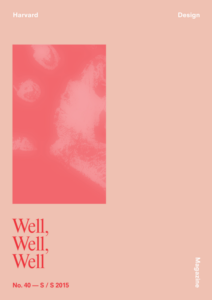Messages from Material Reality
It was the day after my wedding. Eight of us were sitting in a dark room hosted by a chaperone clad in black Louis Vuitton. She pointed to a box full of lightweight fabric slippers and asked us to wear them over our shoes. The sparkles on her bracelet set off memories of the day before: the piercing glare of the Nevada desert, the mad blinking of the Las Vegas strip, the false daylight over the unreal Rialto Bridge. She led us into a room bounded by soft-lit walls that seemed to float away from the edge of the floor. I caught only fragments of her well-rehearsed speech as my mind melted into the space. James Turrell is a pilot as well as an artist … this installation is an experiment in Ganzfeld … like the experience of flying into a dense cloud and losing all depth of perception. Ten minutes later, staring into a space I no longer believed was there, I began to feel an eerie mix of nausea and exhilaration. A yelp traveled up from my primordial gut through the newer plumbing of language and culture. No one reacted when I shouted vagina.
As I walked out into the Nevada sunshine, I turned to see my wife squinting at me with a look of light exasperation. “Why not cunt, you pussy?” she asked.
Imagine you are blind, walking down a path, using a stick to map out the terrain ahead. Through the stick, you feel the hardness of the asphalt, the scratchy flecks of gravel, the slosh of a puddle, and the grubby cores of scattered cracks. As you press patiently ahead, making adjustments to your gait, you can’t help but notice that your sense of self is eerily bound to your sensation of the road. Where along the stick does the self end? At the tip? At the handle? At some point halfway up?
This classic thought experiment pulls the rug out from beneath a widely held assumption: that the mind lives exclusively in the brain.1 The mind may have a seat in the brain, but it is not clear that it stops at the skull. Rather, it seems to extend out through the senses, and, through devices like the walking stick, anchors itself to different parts of its environment, moment by moment. Mind arises in the babble between brain, body, and environment—cut the cords, and there is no mind. After being Turrelled,2 this was clear: in the absence of a patterned input of information, the organization of my consciousness began to break down, culminating in a Dionysian whimper and the displeasure of my wife.
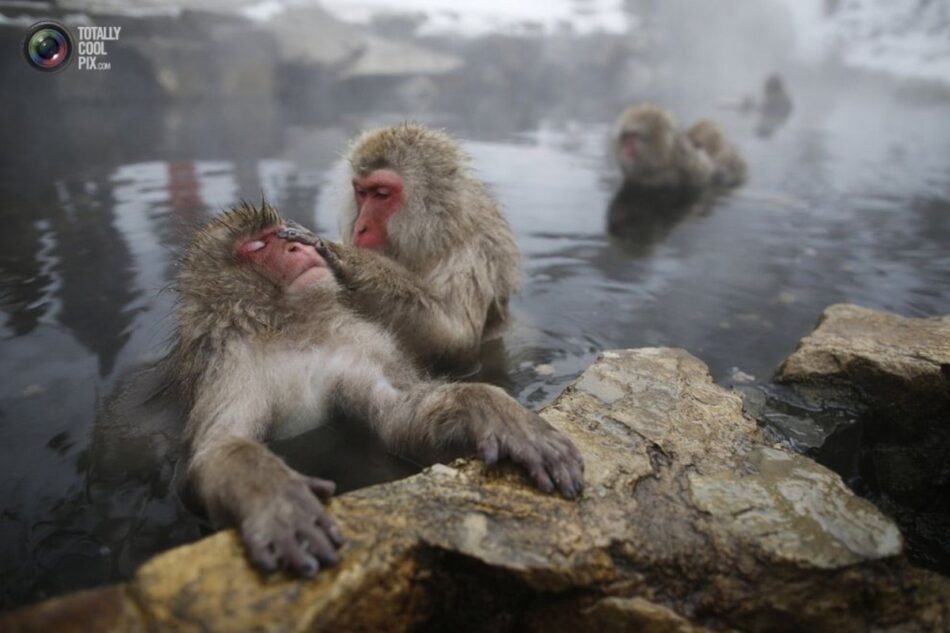
All our senses, like the blind person’s stick, extend out, channeling messages from material reality. Vision and hearing capture information from electromagnetic waves or sound waves, carried from an object on its own trajectory, which may be as close as a bee buzzing past one’s head, or
as far in space and time as a dying star. Taste and smell register when volatile fragments make contact with specialist cells—a molecule from a stream of ingested food, or one that’s been carried by the breeze. Skin senses the flow of heat in different forms—the electromagnetic waves from a nearby fireplace, or the countless sum of nano-impacts from atoms jiggling about in one’s bath.
The closer one looks, the harder it is to draw a line. A lifeless lump of matter such as a bathtub may appear categorically distinct from its surroundings. And for all practical purposes, it is. But when you touch it, its atoms repel your atoms, while never making true contact. At this close-up scale, hard edges dissolve. Dive in deeper, and atoms open up into solar systems, with ghostly cameo appearances from electrons, muons, or gluons, all stage-directed by kooky quantum laws.3
Remarkably, in the hands of a skilled person, a lifeless lump of matter can play an intrinsic role in a sophisticated cognitive process.4 In the hands of an expert potter, an innocuous mound of clay becomes something akin to an analog computer. The fingers may be executing orders from the potter’s brain, but for each step in the creative process, part of the solution is offered by the clay itself—in its changing texture, state, and behavior. There is no need for all the changes to be represented in the potters’ mind. A major part of the “conversation” remains between the clay and the fingers. This is thinking with and through matter. The greater the skill of the potter, the greater his or her intuitive processing power, and the more this power is delegated away from the executive command of the conscious mind.
Articulating the location of the mind may turn out to be as misguided as articulating the whereabouts of the temperature of boiling water, the hardness of a mountain, or the conversation along a telephone line. In light of the rate of technological change in the information age, a more pressing question is: what circuits of information exchange should we cultivate, and which ones should we cut off? If the mind arises in the babble between brain, body, and environ- ment, then the architecture of the communication network determines what messages are broadcast, and when. From moment to moment, these messages set the stage for what you feel, what you think, and how you behave.
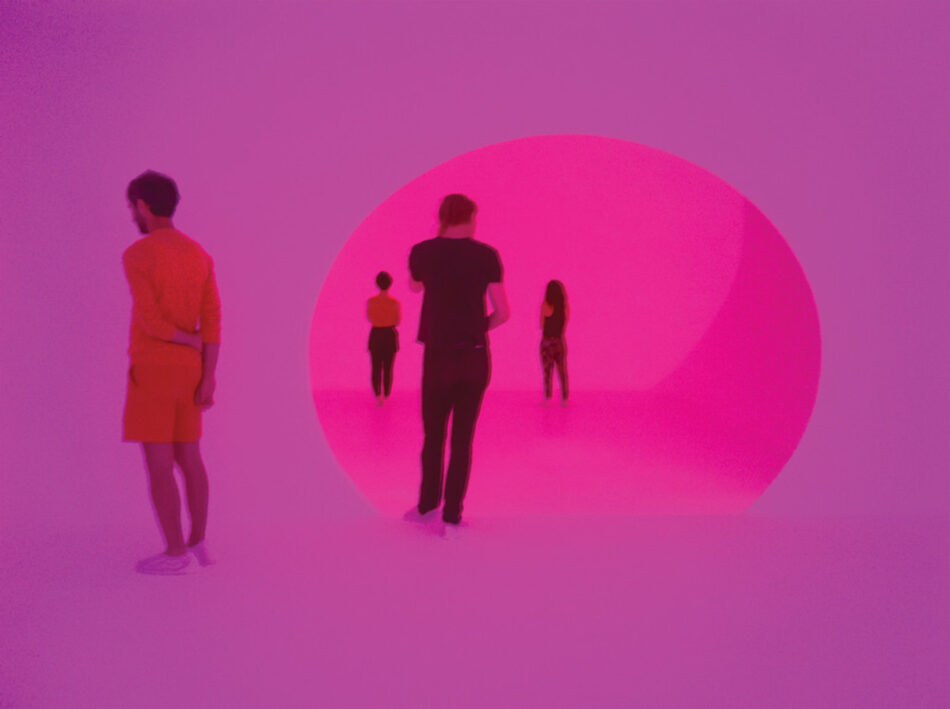
Editing the News
With the launch of the Apple Watch, the philosopher Julian Baggini sounded a warning to data addicts intent on monitoring everything related to personal well-being. The central irony of smartphones and wearable devices is that, distracted by the myriad ways of capturing the moment, we find it hard to be mindful of what is around us. Most gadget-cult rebukes stop there, but Baggini goes further. By constantly monitoring personal indicators of physical, mental, or social fitness, he warns, we risk further alienation. With “smart watches” around our wrists, we become obsessed with micro goals. The more skilled we become at achieving these micro goals, the more we are convinced that we have control over our lives. But our confidence can be misplaced. This type of device “encourage the illusion that we should micromanage our health hour-by-hour, when the best we can really do are the right things, most of the time, over time.”5 In other words, health is a means to living well, not an end in itself. Instead of fussing over short-term indicators, we should train habits that determine well-being in the long term.
With his or her stick, the blind person feels, discovers, and makes sense of the road ahead, making the necessary motion adjustments. With the smart watch, the business executive monitors the stock market, international news, weather, sleeping patterns, social media, and meeting schedules, making adjustments to plans as necessary. Both the stick and the smart watch are interfaces that enable, constrain, and specify a certain type of interaction with the environment. The only real differences are their capacity and their reach. The scope of the stick is limited to messages that can vibrate up from the tip, while the smart watch can query a satellite monitoring a potential storm, a data center record- ing a stream of global gossip, or the pulsing rhythm of the wearer’s cardiovascular system.
The capacity for an individual’s brain to process information is limited. The transmission of one news stream is still to the exclusion of another. When we plug into cyberspace, news streams jockey for primacy, appealing to our mammalian change-seeking hardware. Reports come from near and far, past and present, and it is difficult to know the nature of the environment in which you are immersed, and what forces shape the terrain. Some people find themselves glibly lodged in a lonely cul-de-sac shaped by advertising revenue, mundane work tasks, and narcissistic obsessions.
A striking, even disorienting, peace reigns when wireless signals fall out of range. If digital devices have this power to transform, do buildings? Architecture historian Antoine Picon wonders whether one of the roles of architecture in the digital age will be to protect us from “too much exposure to the invisible flows of information that structure our lives”—to shelter us from the “hustle and bustle of the digital world, instead of mimicking its agitation.”6
On Manhattan’s West Side, Picon finds the Anthropocene taking root. For him, the High Line—an elevated former rail track transformed into a public park—underscores a tectonic shift in the relationship between nature and industrial infrastructure.7 In traditional industrial society, nature supported infrastructure, but now the roles are reversed: infrastructure supports nature. The “traditional vision of a human sphere circled by a foreign nature” no longer applies.8 Nature is no longer “a pervasive condition,”9 and the raw senses are no longer our primary means of identifying with it. Projects like the High Line, and the trend for vertical gardens, satisfy a public need to reflect on the new terms of the relationship. “To see plants in this way, as a vertical forest stemming out of a wall like an urban ornament, reminds us of the new place of nature in our world.”10 In our information-driven age, nature is something that happens. We receive updates about it through a digital broadcast—as a stream of data and occurrences. Through the viewing glass, receiving reports of natural disasters around the world, we observe the aperiodic pulse of the global climate system. Meanwhile, before deciding what clothes to wear, we check the local weather forecast on our smart-phones, instead of stepping outside to have a feel.
Picon goes as far as to suggest that in order to reconcile our new relationship with nature, we may have to fictionalize it.11 How prescient this exposé is in light of #keepitintheground, a bold attempt by the Guardian to find a new narrative for climate change. With ongoing podcasts and videos, its authors share the results of in-house meetings and e-mail exchanges. While the changes to the biosphere underway are extraordinary and pose an existential threat, they do not show on our everyday register. The changes are “occurring too slowly or invisibly for the impatient tick-tock of the newsroom or to snatch the attention of a harassed reader on the way to work. […] There may be things that have yet to happen—stuff that cannot even be described as news on the grounds that news is stuff that has already happened.”12
The Guardian might invite Bruno Latour to contribute. A champion of the philosophy of continuity that I have tried to sketch out, he would bring insight to the problem of “rendering oneself sensitive” to complex “matters of concern” such as the absence of a “Planet B.”13 He could also inject some humor into proceedings. Listening to him explain, at a recent lecture, how philosophy and neuroscience are only now coming to terms with the subject-object fallacy, I laughed out loud when he joked that René Descartes and John Locke spent too much time in Holland being influenced by still life paintings. His project, of course, is deathly serious. As he says, the “background,” or “Gaia,” has always been there, but we have never had to deal with a changing background. We are failing to tell the story of the knock-on effects of our ingrained patterns of consumption. How do we render ourselves sensitive to these almost imperceptible changes? What new “lines of communication” should we construct, and which old ones have we recklessly severed?
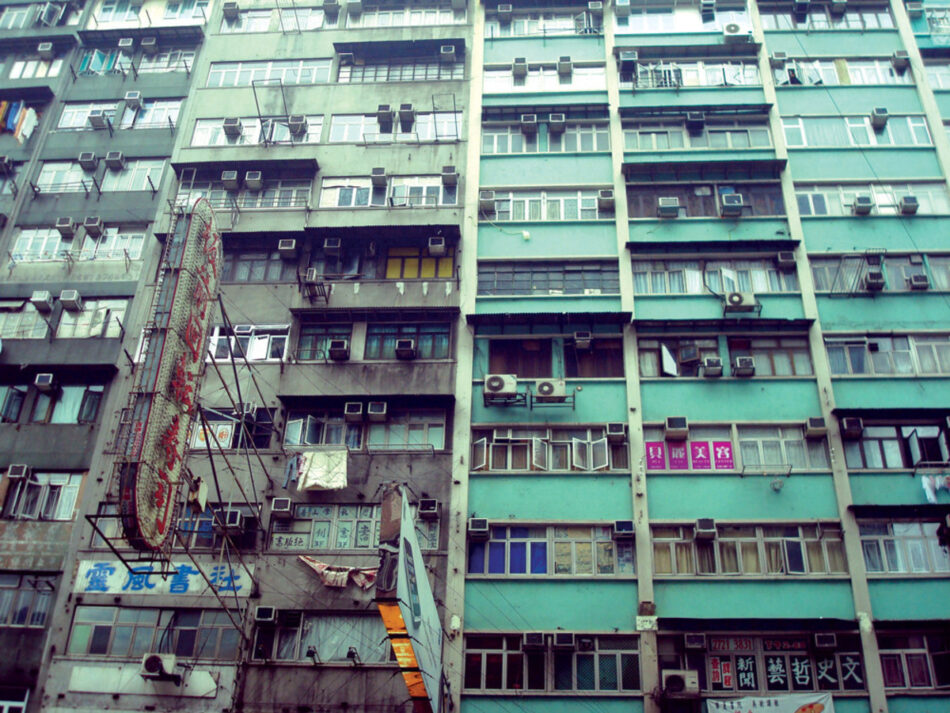
Blunted Sensorium
I recently recreated a classic experiment in the perception of heat. I asked a student to come to a table at the front of our class. On the table were three buckets of water. Behind the table was a screen with a live feed to an infrared camera. It showed the other students that one bucket was hot, one was cold, and one, in the middle, was at room temperature. On my instruction, the volunteer simultaneously plunged one hand into the hot bucket and the other hand into the cold bucket. After acclimatizing to the shock, he took both hands out, and then plunged them into the middle bucket. When I asked him to guess the temperature of this water, he replied: “I can’t tell, because my hot hand feels cold, but my cold hand feels hot!”
We are deeply comparative creatures, hopeless at gauging absolutes. Whether one thinks the water is hot or cold depends on what one has just experienced. This is partly because of the inescapable continuity between mind and environment, and partly because of the limited capacity of the brain to process information.
Our neurons are tuned to register changes to the environment. They are change seeking. Depending on the recent history of the thermal dance between your body, your skin, and your environment, you may experience thermal indifference, pleasure, or pain. The swing of the pendulum is determined by the difference in temperature between the body’s core and skin’s surface. Weighing in at 3.6 kilograms (8 pounds) and covering 2 square meters (22 square feet), this skin is our largest organ. The flow of blood that permeates under the surface is greater than that required for supplying nutrients to the cells growing there. This extra capacity allows for some automatic thermal adaptation to take place: when the vessels dilate, the rate of heat loss to the environment is increased; when the vessels constrict, heat is conserved.
Most other mammals are covered in fur and sweat only from their palms. They must pant to keep cool. We, on the other hand, are covered in sweat glands—up to 10 million of them. For our ancestors on the African savanna, stretched-out body shapes and more sweat glands were a key advantage—with plenty of wet skin exposed to the breeze, they could keep cool while chasing faster and more agile prey.14 All they had to do was keep running until the antelope or cheetah collapsed from heat exhaustion. But on a recent trip to Hong Kong, I was fixated on the countless air-conditioning units, scattered like boxy pimples on a growth spurt of high-rise apartments. I wondered when the owners last had their sweat glands working at full tilt. Because while we all have broadly the same number of sweat glands, the total that grow to be fully operational depends on how much heat stress we experience in youth.15
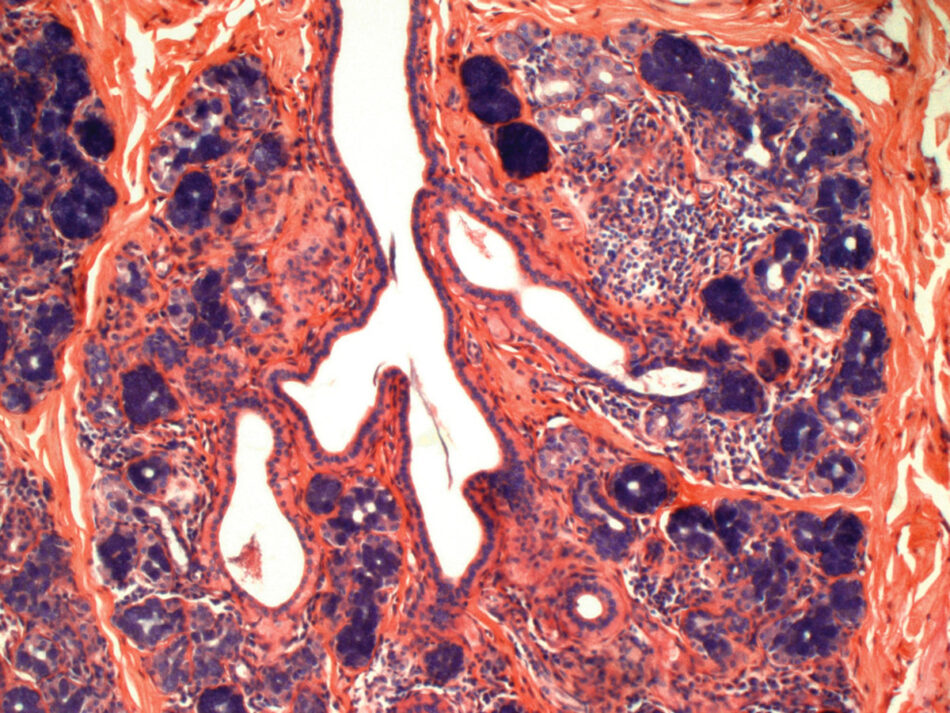
First, we passed on genes to our offspring. Then, with language and culture, we added memes to the list of evolutionary hand-me-downs. Now, we pass on our postindustrial environments, too. When these conditions are at odds with our hunter-gatherer bodies, they can cause mismatch diseases and ailments, such as obesity, myopia, osteoporosis, asthma, and flat feet.16 The luxury trap of air-conditioning brought about sick-building syndrome, a thoroughly modern ailment that bears all the characteristics of an evolutionary mismatch. The network of conditioned spaces that make up much of today’s cities may be inhabiting our most potent thermoregulatory mechanism, namely the ability to keep cool by sweating.
In denying us access to any of the thermal texture that our ancestors evolved in, air-conditioning is dulling our thermal sensoriums. Work is underway to redress the balance, with research institutes such as the Center for the Built Environment at the University of California, Berkeley, producing results that fundamentally challenge the idea that suspending occupants in a state of thermal indifference is necessary or even desirable. For now, however, most of us continue to spend much of our working lives inside a giant thermal Turrell environment. Perhaps unblunting our thermal sensoriums would help to heighten our sensitivity to climate changes, changes from which we are dangerously disembodied.
Things, devices, and buildings do more than merely serve us in helping to solve problems. Through them we think, sense, experience emotions, engage with people in one way, another way, or not at all. They anchor us in one place, or many places; they enable us to make small refinements to our surroundings, undertake entire reconstructions, or wholesale swaps. They are the accelerator or brake to our perception of time, and have the power to hook-in and bind together many separate happenings across time. They allow us to interrogate small-scale and large-scale phenomena that would otherwise be inconceivable. They can change the order in which we carry out cognitive tasks, the areas of the brain in which these tasks are carried out, or delegate the tasks to other humans or devices. In all these ways and more, things influence the way we think. And since the brain is a work in progress, our use of things leads to real, physical rewiring. Existing pathways get fine-tuned, and new connections are made, bridging either nearby processing nodes, or entire brain regions.
Gregory Bateson once said that “the major problems in the world are the result of the difference between how nature works and the way people think.”17 It’s now time to design things that render us sensitive to the important changes happening in the world.
2. On the day after my wedding in the Valley of Fire, my wife, six friends, and I visited James Turrell’s Akhob (2013) installation at the Louis Vuitton store on Las Vegas Boulevard. Turrell’s website lists his numerous experiments in the “Ganzfeld effect”—perceptual deprivation caused by unstructured but uniform stimulation of the senses.
3. See Jim Al-Khalili and Johnjoe McFadden, Life on the Edge: The Coming Age of Quantum Biology (London: Bantam Press, 2014). The book is an exquisite report on the role that quantum mechanics may play in our sense of smell. The title of this essay is taken from a passage of their book that describes how the senses work.
4. See chapter 9 in Lambros Malafouris, How Things Shape the Mind: A Theory of Material Engagement (Cambridge, MA: MIT Press, 2013).
5. Julian Baggini, “Apple Watch: Are You Feeling the Terror?,” Guardian, March 11, 2015, http://www.theguardian.com/commentisfree/2015/mar/11/apple-watch-are-you-feeling-the-terror.
6. Antoine Picon, Digital Culture in Architecture: An Introduction for the Design Professions (Basel: Birkhäuser, 2010), 103.
7. Antoine Picon, “Nature, Infrastructure and Cities,” in The Return of Nature: Sustaining Architecture in the Face of Sustainability, ed. Preston Scott-Cohen and Erika Naginski (New York: Routledge, 2014), 172–80.
8. Picon, Digital Culture in Architecture, 122.
9. Ibid.
10. Picon, “Nature, Infrastructure and Cities,” 176.
11. Ibid.
12. Alan Rusbridger, “Climate Change: Why the Guardian Is Putting Threat to Earth Front and Centre,” Guardian, March 6, 2015, http://www.theguardian.com/environment/2015/mar/06/climate-change-guardian-threat-to-earth-alan-rusbridger.
13. Bruno Latour, “Keynote” (presentation, CAST Symposium, MIT, Cambridge, MA, September 23, 2014).
14. See chapter 4 in Daniel E. Lieberman, The Story of the Human Body: Evolution, Health, and Disease (New York: Pantheon Books, 2013).
15. Ibid., chapter 11, note 3.
16. Ibid.
17. Gregory Bateson in Nora Bateson, dir., An Ecology of Mind (2010).
Salmaan Craig is Lecturer at the Harvard University Graduate School of Design and Research Associate at the Center for Green Buildings and Cities. He teaches courses in energy and materials, while working on new building materials that allow occupants in hot or cold climates to enjoy the benefits of natural ventilation. After receiving his Engineering Doctorate, he worked at Buro Happold, and later at Foster + Partners, on projects such as the Louvre Abu Dhabi, Masdar Institute, Apple Campus, and Bloomberg Place. He has also worked on climate-control shoes with a major footwear company.
